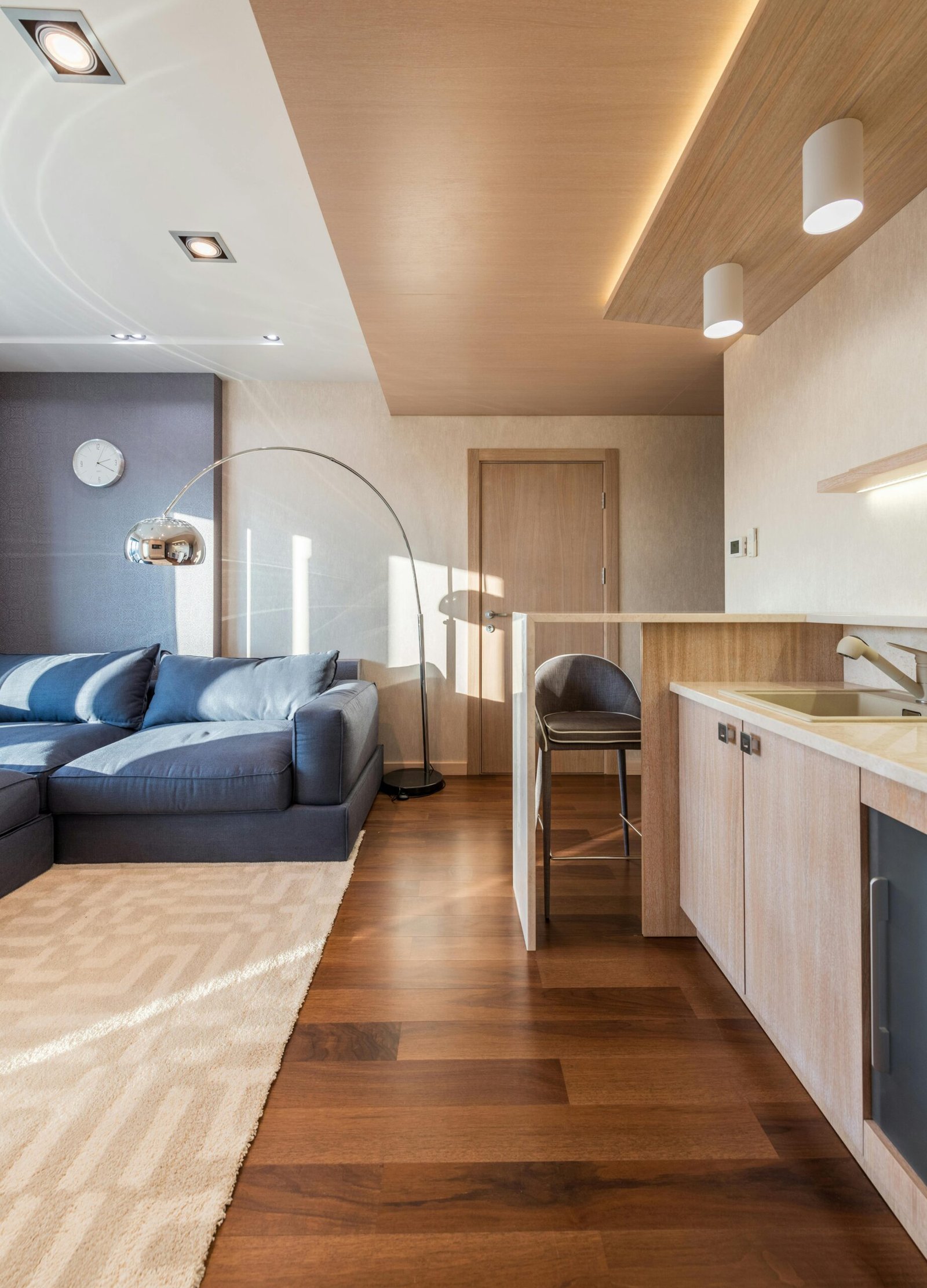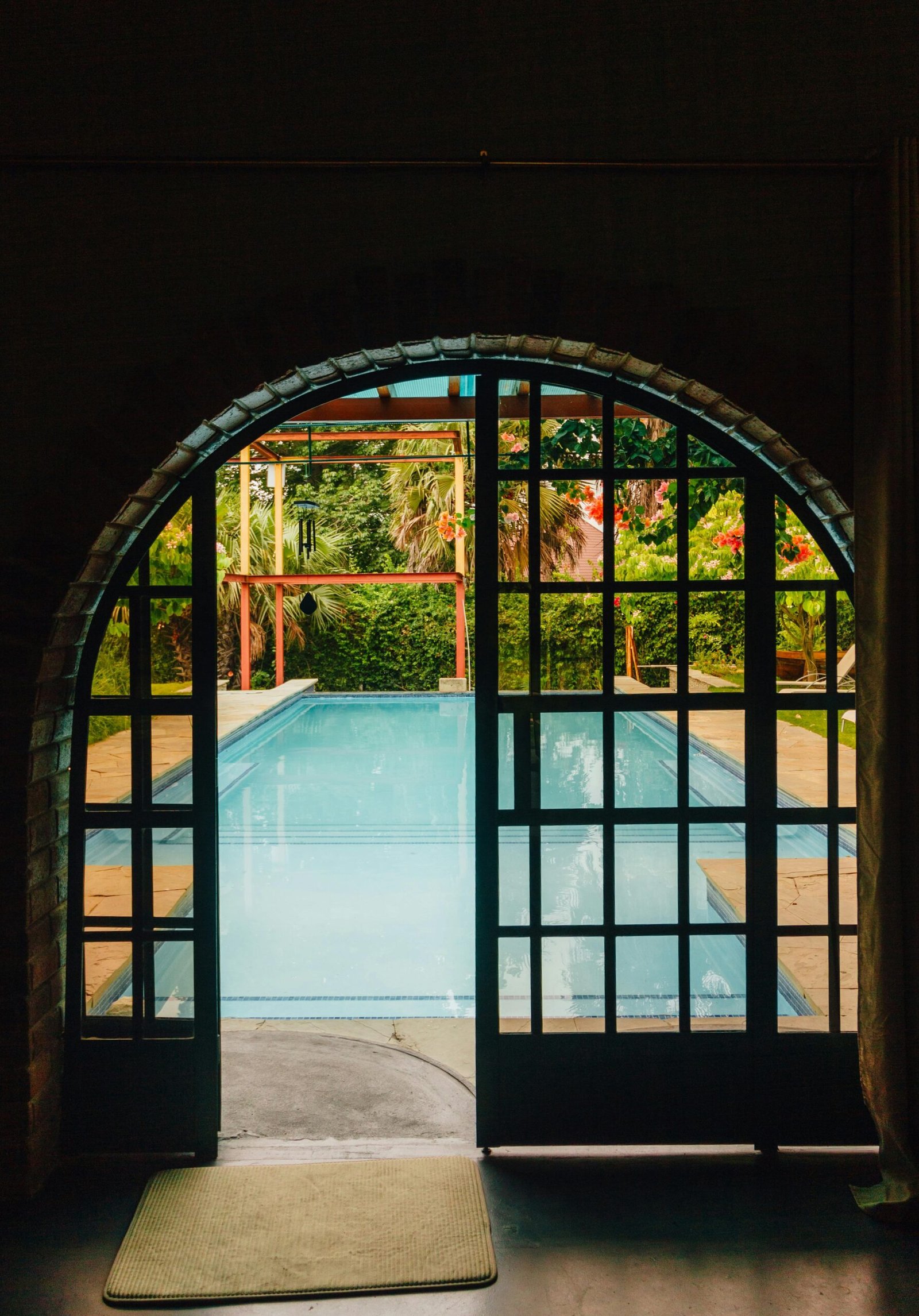When it comes to home design, lighting is often an overlooked aspect that can dramatically affect the look, feel, and function of your space. Lighting can set the mood, enhance the aesthetic of your home, and even improve your productivity and well-being. Whether you’re designing a cozy living room, a functional kitchen, or a relaxing bedroom, getting your lighting just right can make all the difference.
In this guide, we’ll explore the basics of lighting design, the different types of lighting, and tips for illuminating your home in a way that complements your space. Whether you’re a first-time homeowner or someone looking to refresh your lighting setup, this article will help you make informed decisions and achieve the perfect ambiance for every room.
1. Why Lighting Matters in Home Design
Lighting is more than just a functional necessity. It can transform your home in many ways:
- Mood and Atmosphere: Lighting creates the mood in a room. Whether you want a relaxing, warm ambiance in the living room or bright, energetic lighting in a workspace, lighting plays a key role.
- Visual Appeal: Lighting enhances the aesthetic of your home. Properly placed lighting can accentuate artwork, architectural features, and furniture, while poor lighting can make even the most beautiful spaces feel dull.
- Practicality and Safety: Lighting helps you navigate your home safely, especially in areas like stairways, hallways, and bathrooms. It also helps with tasks that require good visibility, like cooking or reading.
2. Types of Lighting: Understanding the Basics
To design the perfect lighting scheme for your home, you need to understand the three main types of lighting:
- Ambient Lighting: This is the primary source of light in a room. Ambient lighting provides a general level of illumination that allows you to see and move around safely. It’s typically created by overhead fixtures, such as chandeliers, recessed lights, or ceiling-mounted fixtures. Ambient lighting sets the stage for the rest of the lighting layers in a room.
- Task Lighting: As the name suggests, task lighting is designed to help you perform specific tasks. This includes reading, cooking, or working. Task lighting is usually more focused and brighter than ambient lighting, and it’s often provided by desk lamps, pendant lights, or under-cabinet lighting.
- Accent Lighting: Accent lighting is used to highlight a particular feature or area in a room. It’s often used to create visual interest by spotlighting artwork, architectural details, or plants. Track lighting, wall sconces, and picture lights are great examples of accent lighting.
3. Layering Your Lighting for Maximum Impact
The key to a well-lit home is layering your lighting. This means combining ambient, task, and accent lighting to create a balanced, flexible lighting plan. Here’s how you can layer lighting in different rooms:
- Living Room: Start with ambient lighting from ceiling fixtures, such as recessed lights or a chandelier. Add task lighting with floor or table lamps for reading or relaxing. Use accent lighting to highlight artwork, plants, or a fireplace.
- Kitchen: The kitchen requires a combination of ambient, task, and accent lighting. Use overhead lights for ambient illumination. Install under-cabinet lighting to brighten countertops for meal preparation. Add pendant lights over an island for a task-oriented touch, and use accent lighting to highlight cabinetry or unique features.
- Bedroom: Bedrooms should feel restful and cozy. Start with soft ambient lighting from ceiling lights or lamps. Use task lighting next to the bed for reading or other activities. Accent lighting can help set a tranquil mood, such as string lights, candles, or wall-mounted fixtures.
4. Choosing the Right Fixtures for Each Room
Once you understand the types of lighting, it’s time to choose the right fixtures for each room. The fixture you choose will not only impact the lighting quality but also the overall style of the space.
- Chandeliers: A great choice for dining rooms, entryways, and large living spaces, chandeliers add elegance and provide ample ambient light. Look for styles that match the decor of the room—whether it’s traditional, modern, or industrial.
- Pendant Lights: Perfect for kitchens, dining rooms, and even bathrooms, pendant lights provide task lighting with a stylish flair. They can be grouped together for a statement look or used alone for targeted illumination.
- Floor and Table Lamps: These are versatile fixtures that can provide both task and accent lighting. They’re great for living rooms and bedrooms, and they add personality to the space. Choose lamps that complement your furniture and room design.
- Wall Sconces: Wall-mounted sconces are perfect for adding accent lighting or lighting up dark corners. They’re often used to highlight artwork or architectural features.
- Recessed Lighting: Discreet and modern, recessed lighting offers a clean, uncluttered look while providing ample ambient light. They’re especially great for low-ceiling rooms or places where you don’t want to distract from the decor.
5. Consider the Color Temperature of Your Lighting
The color temperature of your lighting can drastically change the vibe of your space. It’s essential to choose the right color temperature to create the right atmosphere.
- Warm Light (2700K–3000K): Warm white lighting creates a cozy, inviting atmosphere and is perfect for living rooms, bedrooms, and dining areas. This color temperature mimics the soft glow of traditional incandescent bulbs and is ideal for relaxation.
- Neutral Light (3500K–4100K): Neutral white lighting provides a more natural, balanced light that works well in kitchens, bathrooms, and offices. It’s not too warm or too cool, making it versatile for everyday use.
- Cool Light (5000K and above): Cool white or daylight bulbs emit a brighter, more energizing light, which is great for task-oriented spaces like kitchens and work areas. They’re ideal for increasing focus and productivity.
6. Energy Efficiency: Choosing the Right Bulbs
Energy-efficient bulbs are not only better for the environment, but they also save you money in the long run. The three most common types of light bulbs are:
- Incandescent Bulbs: These are traditional bulbs that offer warm, natural light but are less energy-efficient. They use more energy and have a shorter lifespan than other options.
- CFL (Compact Fluorescent Lamps): CFLs are more energy-efficient than incandescent bulbs and last longer, but they take a little time to reach their full brightness. They are a good middle ground between incandescent and LED.
- LED Bulbs: LEDs are the most energy-efficient option and have the longest lifespan. They consume less power and emit less heat, which is great for both your wallet and the environment. While they tend to be a little more expensive upfront, the savings over time are significant.
7. Smart Lighting: Convenience at Your Fingertips
Incorporating smart lighting into your home is a great way to add convenience and enhance the functionality of your lighting design. With smart bulbs and systems, you can:
- Control Lighting Remotely: Use an app or voice commands (via devices like Alexa or Google Home) to adjust your lights from anywhere, whether you’re at home or away.
- Create Schedules: Set your lights to turn on and off at specific times to mimic your routine or for security purposes.
- Adjust Brightness and Color: Smart bulbs allow you to change the color temperature and brightness to suit different moods or activities, offering ultimate flexibility.
8. Tips for Lighting Specific Spaces
Different areas of your home have different lighting needs. Here are some specific tips for key spaces:
- Living Room: Use a mix of overhead ambient lighting, floor and table lamps, and accent lights. Keep the lighting soft for a relaxing ambiance. For movie nights, opt for dimmable lights or smart lighting to create a cozy atmosphere.
- Kitchen: Bright task lighting is key. Install under-cabinet lighting to illuminate countertops, and add pendant lights over an island for focused light. Recessed lighting works well for general illumination in the cooking and prep areas.
- Bathroom: In bathrooms, vanity lighting is essential. Install lights around the mirror to ensure even, flattering light for grooming and makeup application. Consider a combination of ambient lighting and task lighting for the perfect balance.
- Bedroom: Create a calm, relaxing environment with soft, warm lighting. Use bedside lamps for task lighting, and add some accent lighting with wall sconces or fairy lights to enhance the cozy vibe.
- Home Office: Task lighting is essential for a productive workspace. Choose adjustable desk lamps or overhead lights with adjustable brightness to minimize eye strain. Ambient lighting should be soft and not too harsh.
9. Conclusion: Bringing It All Together
Proper lighting design is an art form that requires careful consideration of your space, the purpose of each room, and the mood you want to create. By layering different types of lighting—ambient, task, and accent—you can achieve a balanced, functional, and beautiful lighting scheme that enhances the overall look and feel of your home.
Remember to choose the right fixtures for each room, consider energy-efficient bulbs, and experiment with color temperatures to set the right tone. And if you’re looking for convenience, smart lighting options are a fantastic way to make your home even more versatile.
Good lighting can completely transform a room—whether it’s to create a cozy atmosphere for a relaxing evening, boost your productivity in a home office, or add a dramatic flair to a feature wall. With a little planning and thoughtfulness, your home will shine in every sense of the word.
FAQs
1. How many types of lighting should I have in a room?
It’s ideal to have at least three types of lighting: ambient (general lighting), task (focused lighting for specific activities), and accent (for visual interest). Layering these lighting types creates a well-balanced, functional space.
2. What’s the best way to light a small room?
In small rooms, use a combination of ceiling-mounted fixtures for ambient light and add wall sconces or lamps to avoid clutter. Mirrors and light-colored walls can help reflect light, making the space feel bigger.
3. Can I use LED bulbs in any fixture?
Yes, LED bulbs are compatible with most fixtures, but make sure the wattage and shape are appropriate for the fixture. If you’re using a dimmable fixture, make sure the LED bulb is also labeled as dimmable.
4. How can I reduce glare from overhead lights?
To reduce glare, opt for dimmable lights or fixtures with diffusers that soften the light. Additionally, placing lamps at different heights or angles can help spread the light more evenly without creating harsh spots.
5. How often should I change the bulbs in my home?
LED bulbs can last up to 25,000 hours, which means they can last for years with normal use. However, it’s still a good idea to check your bulbs regularly, especially in high-use areas, and replace them when they start to flicker or lose brightness.




